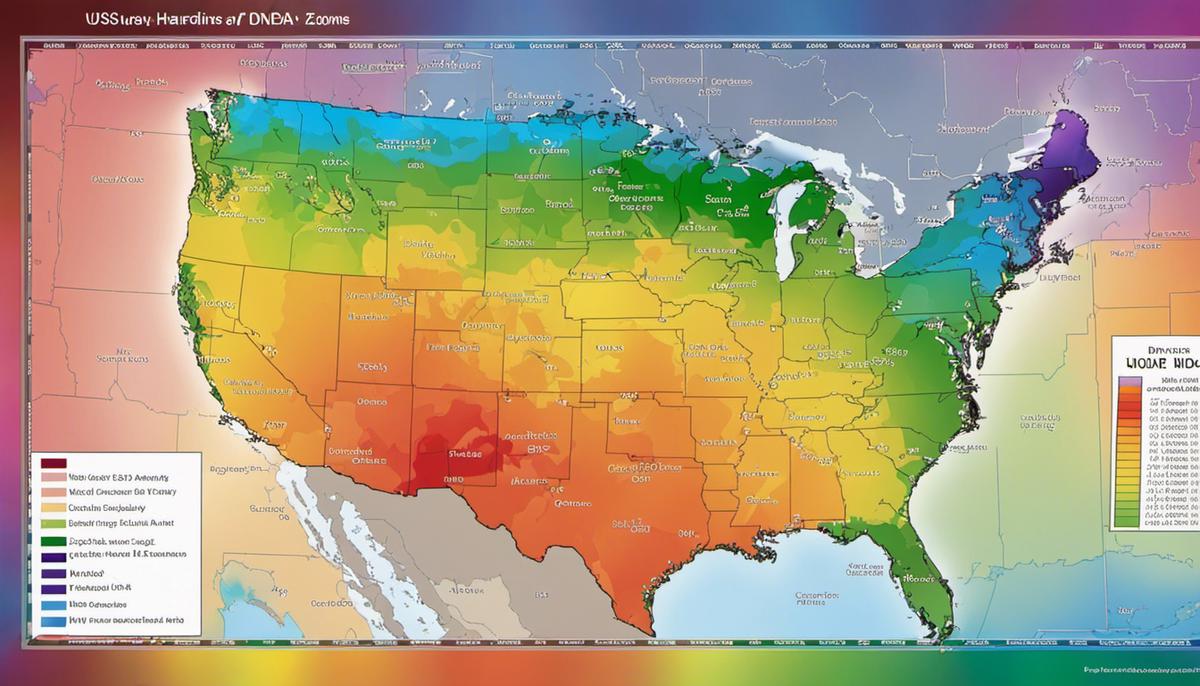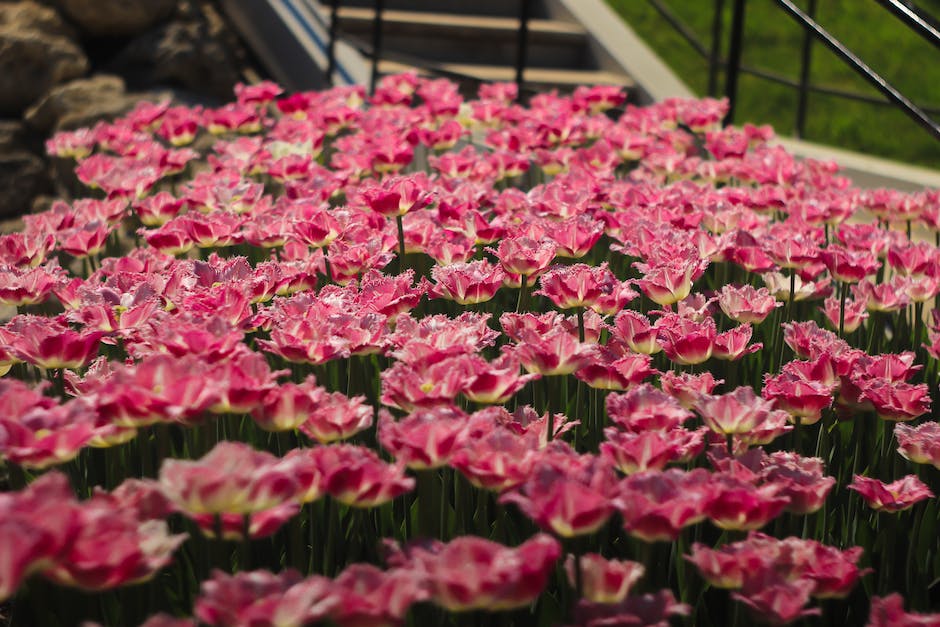Utah’s Planting Zone: Thriving Gardens Explained

Establishing a thriving garden is a labor of love, requiring an understanding of the nuances of regional climate and plant compatibility. Among these, figuring out the USDA Hardiness Zones becomes fundamentally critical. This essential feature functions as the benchmark in identifying regions where certain garden and crop species can flourish. This essay takes a closer look at these zones and specifically zooms in on Utah – its unique classification and what it entails for the seasoned and budding gardener. To understand the remarkable variations from one zone to another, this discourse highlights their differences, emphasizing their role in successful gardening. Furthermore, it offers insights on picking plants that are best suited to the Hardiness Zone within which Utah sits, thereby equipping garden enthusiasts with the knowledge of creating a spectacular garden oasis.
Understanding USDA Hardiness Zones
The Magic of USDA Hardiness Zones: An Insider’s Guide to Skillful Planting
As passionate plant enthusiasts, we hold a fundamental truth: A love for plants is a love for life, in all its vivid expressions of color, shape, and the sheer triumph of growth over adversity. A garden is not just a patch of aesthetically pleasing vegetation; it’s an exhibition of nature’s artistry, uniquely orchestrated by human hands. Among the many tools that help shape this delicate balance, USDA Hardiness Zones stand as the gatekeepers, shedding light on the complex yet insightful planetary puzzle.
So, what exactly are these USDA Hardiness Zones and how do they aid gardening aficionados in creating their green masterpieces?
USDA Hardiness Zones refer to the series of geographically defined areas in North America charted by the United States Department of Agriculture (USDA). The zones are determined based on an area’s average annual extreme minimum temperature over the past three decades.
These zones reliably predict where a plant is most likely to survive the winter. After all, each plant has its climatic sweet spot, withstanding cold up to a specific point. Planting correctly according to hardiness zones brings us one step closer to the picture-perfect blossoming of our gardens, irrespective of seasons’ change.
Covering North America in a broad swathe from the freezing Canadian northern zones to the tropical southernmost tip of Florida, the USDA Hardiness Zones constitute a detailed map of 13 major zones. Each zone represents a 10-degree Fahrenheit increment, further broken down into ‘a’ and ‘b’ to accommodate 5-degree differences.
For instance, the balmy regions of Florida fall under Zone 10 and 11, facilitating the growth of tropical species that withstand minimum temperatures above 30℉. Contrastingly, Zone 3, which includes parts of Alaska, maintains the resilience of hardy perennials adept at surviving extreme subzero temperatures up to -40℉.
Decoding these zones may initially seem complex, but it’s simpler than you’d think! Look out for Plant Hardiness Zone information on seed packets, plant labels, and in plant catalogs. This information equips us gardeners with valuable know-how, driving informed decisions about whether a particular plant would be a fitting choice for our garden’s climatic conditions.
Plainly put, USDA Hardiness Zones serve as a guide, nudging us towards optimal plant selection tailored to our local climate. Ranging from succulent cacti in arid zones to lush ferns in the foggy northwest, plants embody their environment, and the hardiness zones bring this symbiotic relationship to light.
Thus, gardening with an appreciation for the USDA Hardiness Zones transforms each of us into more than just hobbyists. We become eco-savvy horticulturists, playing an active role in harmonizing our environment by choosing flora key to our local ecosystems’ well-being. As we get our hands dirty, we’re not just planting seeds; we’re cultivating a symbiotic relationship with nature. And in the grand scheme of things, isn’t that what gardening is all about?
Wherever you find yourself on the Hardiness Zone map, remember, each zone has its unique palette of horticultural potential. So, pull on those gardening gloves and sow the seeds of proliferation, colored by your local hardiness zone’s fascinating array!

Plant Selection According to Zones
Unlocking Utah’s Flora: Discovering Suitable Plants for the Beehive State
Stepping into the realm of Utah’s planting zones, we find ourselves at the heart of an intriguing ecosystem. Bearing the badge of USDA Hardiness Zones 4 through 9, there’s a remarkable diversity of plants that roar with resilience, the kind that suits Utah’s varied climate conditions.
Situated in Zone 4, the northernmost region of Utah revels in the frosty embrace of cold-hardy plants. These include native species such as Cliffrose and Utah Juniper, which can withstand frigid winters. Perky perennials like the splendid Coral Bells, with their array of colors and the sparkling Snow-in-Summer make this zone a visual delight. For tree lovers, there’s an array of conifers like Blue Spruce that stand tall amidst the chill, adding life to the winter landscape.
Profiling down to Zone 5 and 6, we get a bit more adventurous in plant choices. As the climate turns milder, fruit trees like apricots, plums, apples, and cherries come impromptu on the list. The state flower, Sego Lily, a drought-tolerant perennial excellent for xeriscaping, reigns supreme in this region. Don’t forget the stunning display of Canyon Maple, a Utah native that can set your autumn landscape ablaze with its fiery foliage.
In the warmer zones of 7 and 8, the plant palette becomes broader, enabling the growth of more diverse species. You will find Utah’s state tree, the Blue Spruce, in this region, coupled with various other conifers, oak species, and flowering trees. For the ground, sturdy succulents like the robust Sedums seem fitting. The Yucca, an iconic desert plant, can also add an architectural flair to your dry-area landscapes.
Utah’s warmest zone, 9, seems paradoxically Kentucky Bluegrass-friendly. Gardeners also indulge in the bounty of Peach and Fig trees. Ornamental varieties like the Pomegranate and aromatic herbs such as Rosemary and Lavender also characterize this zone.
Indeed, Utah’s planting zones are not just about ticking boxes in botanical catalogs, they are about upholding the ethos of gardening in service to a bioregion. So, exploration remains key. By embracing trueness to terrain, even an accidental gardener can become an ecosystem engineer, creating thriving landscapes that respect Utah’s unique climate zones while also nurturing blooms that bring joy to the heart. Happy gardening, Utah!

Caring for Plants in Utah’s climate
Shifting now to the specifics of Utah’s geographic peculiarity, it’s essential to understand that this state exists in multiple USDA Hardiness Zones ranging from Zone 4 to Zone 9. Covering this broad range provides gardeners an incredible diversity of plants to cultivate, each zone offering its unique selection.
In Zone 4, challenging conditions due to cold temperatures demand hardier vegetation. Utahans can resort to planting Engelmann spruce, Subalpine fir, or Quaking aspen, all native to the region and known for their resilience. For enriching the home garden, heartier flowers like brandywine crabapple and peony thrive spectacularly in this zone.
Transitioning to Zones 5 and 6, the temperature moderates, opening up a world of colorful and vibrant planting options. Utah’s state flower, the Sego Lily, is remarkably suited for these zones. As for fruit trees, apple and peach trees are perfect candidates for providing juicy summer fruits. Think of autumn foliage, and the Red Maple springs to mind, offering brilliant red foliage every fall.
Zones 7 and 8, with a warmer climate, foster a distinct range of plants. Evergreen conifers like Rocky Mountain juniper and flowering trees such as the hot wings tartarian maple can make a stunning addition to Utah gardens in these zones. For those inclined towards desert aesthetics, succulents like Sedum and Sempervivum offer a fantastic solution, thriving in Utah’s dry landscapes. Let’s also not forget those iconic desert plants like Joshua Tree and Yucca which can boldly illustrate your landscape’s desert spirit.
Excitingly, if your Utah home falls in Zone 9, you’ll find an astonishingly diverse range of plant species to explore. Kentucky bluegrass is a common lawn choice in this zone due to its lush and hardy nature. Lovers of fruits can delve into planting apricot and plum trees renowned for their bounty in this particular zone. Ornamental plant varieties such as daylily give your garden an elegant touch, while aromatic herbs like lavender and rosemary provide invigorating fragrances and highly useful culinary additions.
With this understanding of Utah’s unique multi-zone climate, remember, the gardening possibilities are incredibly diverse and exciting. From cultivating hardy conifers in the northern colder zones to painting your garden with vibrant desert flora in the south, the garden becomes your canvas to embrace the unique horticultural potential offered by Utah’s Hardiness Zones. Whether you’re a dedicated hobbyist or a novice green thumb, each Utah – hardened plant you nurture adds a vibrant touch to this magnificent landscape. Embrace the thrill of gardening in Utah – where both challenges and opportunities abound!

Discerning Utah’s specific climate requirements calls for customized plant care guidelines. It’s important to factor in the distinct environmental variations – the temperature spectrum, sunlight duration, and precipitation patterns. Understanding these factors can significantly contribute to the health and beauty of your garden. Lastly, we delve into the practical execution of your newfound knowledge by discussing in detail watering methods, sunlight timing, and pest control deterrents. Every gardening journey involves continuous learning and flexibility. Equipping yourself with the knowledge of these inimitable conditions may be the first significant step towards a verdant and blossoming garden in Utah.



